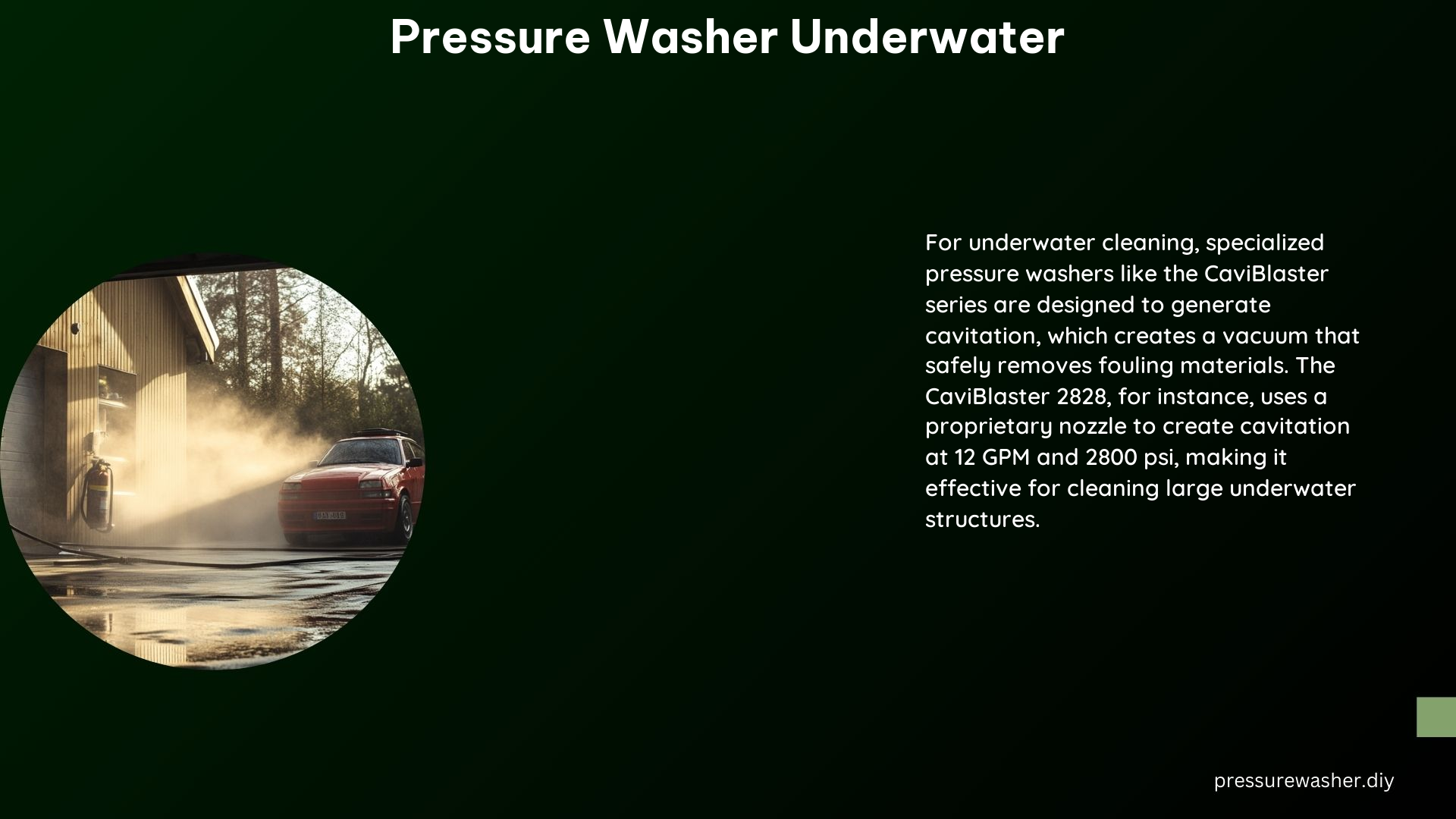Using a pressure washer underwater for marine growth removal and pool floor cleaning is a viable option, but it requires specific technical specifications and careful consideration of the equipment and techniques involved. This comprehensive guide will provide you with a detailed understanding of the technical specifications, practical applications, and DIY considerations for using a pressure washer underwater.
Technical Specifications
CaviDyne CaviBlaster Models
- Model 0625: This model offers 6 GPM (Gallons Per Minute) of flow rate and 2500 PSI (Pounds per Square Inch) of pressure, and is available with either a gasoline or diesel motor.
- Model 1222: This model delivers 12 GPM of flow rate and 2800 PSI of pressure, with the option of a diesel power or electric power source.
- Model 1622-D: This model provides 15.6 GPM of flow rate and a pressure range of 100-2000 PSI, powered by a diesel engine.
- Model 2040: This heavy-duty model is designed for offshore cleaning, offering 20 GPM of flow rate and a pressure range of 100-4000 PSI, with a diesel power source.
- Model 2828: This is a high-pressure water power unit specifically designed for cavitation-based cleaning, offering unparalleled performance for underwater applications.
Key Considerations
- Pressure and Flow Rate: Higher pressure (PSI) and flow rate (GPM) are essential for effectively cleaning underwater surfaces, as they provide the necessary force to remove stubborn marine growth and debris.
- Cavitation: The CaviBlaster system utilizes cavitation, a process that generates a vacuum to remove fouling materials, making it more efficient than traditional high-pressure blasting methods.
- Nozzle Design: The proprietary nozzle design in the CaviBlaster models is a crucial component, as it is responsible for generating the cavitation effect and ensuring efficient cleaning.
Practical Applications

Marine Growth Removal
- Gas-Powered Pressure Washer: While a gas-powered pressure washer can be used underwater, it is essential to keep the pump and motor above water, and the hose and wand must be designed for underwater use to ensure safety and performance.
- CaviBlaster Models: These models are specifically designed for underwater cleaning, offering superior performance and safety compared to traditional pressure washers. The cavitation technology and high-pressure, high-flow capabilities make them the preferred choice for marine growth removal.
Pool Floor Cleaning
- Specialized Equipment: For cleaning pool floors, it is recommended to use pool-specific pressure washers or underwater cleaning systems to avoid damaging the pool surface or disrupting the water balance.
DIY Considerations
- Sea Water Pump: A viable DIY approach is to use a high-pressure pump that can suck up sea water and shoot it at the growth. However, this requires careful design and execution to avoid damaging the hull or other surfaces.
- Jet Nozzle Design: When using a DIY sea water pump setup, it is essential to have larger jet nozzles to prevent salt and sediment from clogging or jamming the system.
References
- CaviDyne CaviBlaster Product Overview
- The Hull Truth Forum Discussion on Pressure Washers Underwater
- Cruisers Forum Discussion on Using Pressure Washers Underwater
- Dive Commercial Underwater Cleaning Equipment
- Reddit Discussion on Using Pressure Washers to Clean a Hull
By understanding the technical specifications, practical applications, and DIY considerations, you can effectively utilize a pressure washer underwater for marine growth removal and pool floor cleaning, ensuring optimal performance and safety.
